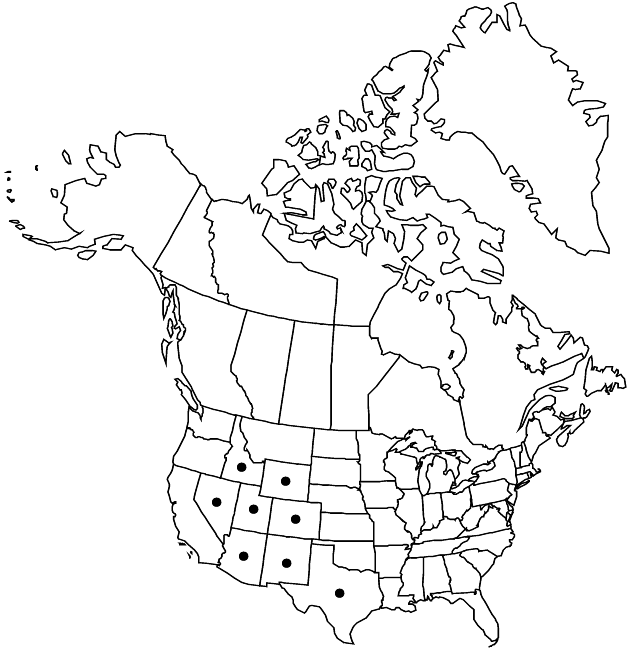Difference between revisions of "Heterotheca fulcrata var. fulcrata"
FNA>Volume Importer |
FNA>Volume Importer |
||
| Line 62: | Line 62: | ||
|publication year= | |publication year= | ||
|special status= | |special status= | ||
| − | |source xml=https://jpend@bitbucket.org/aafc-mbb/fna-data-curation.git/src/ | + | |source xml=https://jpend@bitbucket.org/aafc-mbb/fna-data-curation.git/src/f50eec43f223ca0e34566be0b046453a0960e173/coarse_grained_fna_xml/V19-20-21/V20_532.xml |
|tribe=Asteraceae tribe Astereae | |tribe=Asteraceae tribe Astereae | ||
|genus=Heterotheca | |genus=Heterotheca | ||
Revision as of 20:28, 16 December 2019
Stems sparsely to moderately hispido-strigose and stipitate-glandular. Distal cauline leaf blades ovate to lanceolate, (12–)16–39(–55) × 5–15 mm, margins with few long-hispido-strigose cilia, faces sparsely to moderately hispido-strigose and stipitate-glandular. Subtending bracts ovate, usually large (7–22 × 2–6 mm), leaflike, well differentiated. Involucres 6.7–10.3 mm. Phyllaries lanceolate to triangular-lanceolate, moderately strigose and stipitate-glandular. Ray laminae (8–)9.8–14.5 mm. Cypsela faces sparsely to moderately strigose. 2n = 18, 36.
Phenology: Flowering (Jun–)Aug–Sep(–Oct).
Habitat: Riparian zones in ponderosa pine and Douglas fir forests, grassy clearings in Ponderosa pine forest, lower spruce-fir zone, sandy riverbanks, roadsides, coarse sandy granitic soils with gravel, crushed lava gravelly soils, moist disturbed soils, shale slopes with sandstone outcrops, open, upper grass and sagebrush slopes
Elevation: 1500–3100 m
Distribution

Ariz., Colo., Idaho, Nev., N.Mex., Tex., Utah, Wyo.
Discussion
Variety fulcrata grows in the Front Range of the Rocky Mountains (Colorado and Wyoming), and in disjunct populations in Arizona, New Mexico, and Utah; it is considered very rare and atypical in adjacent Idaho, Nevada, and Texas, where it is of conservation concern. Variety fulcrata is the most variable member of Heterotheca fulcrata. It is characterized by having more hairs than glands per area of leaf face, the hairs being sparse to moderate. Many collections are morphologically intermediate in indument features with var. amplifolia. A few intermediates with the other two varieties also have been collected, as well as a number of possible hybrids with H. pumila and with several varieties of H. villosa.
Selected References
None.